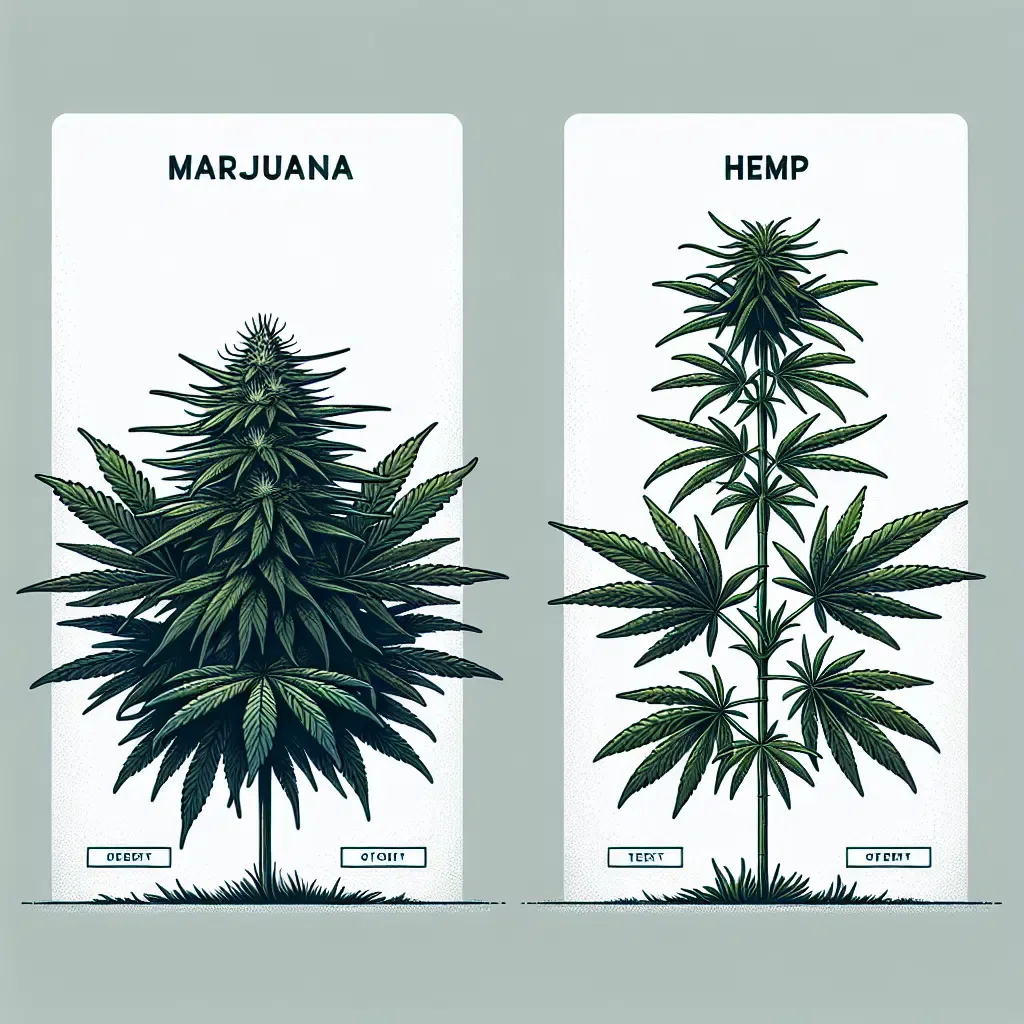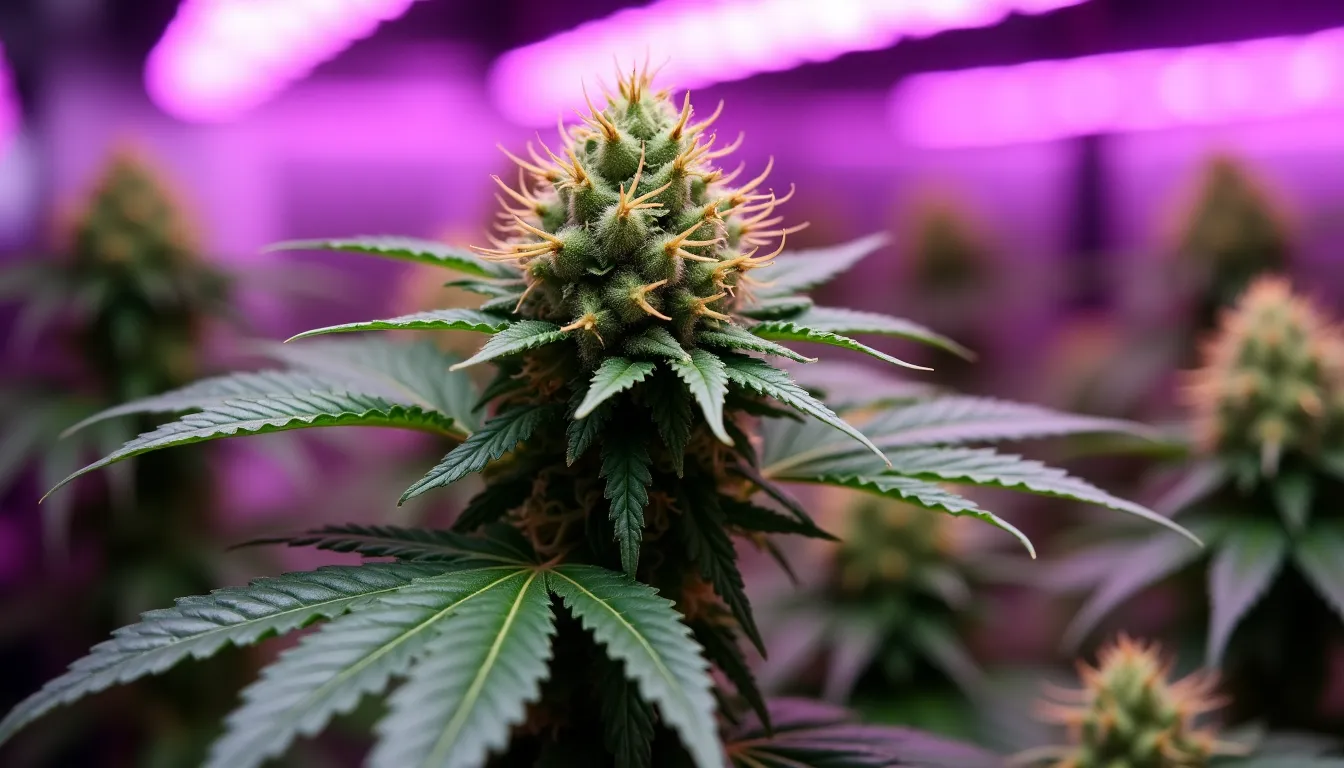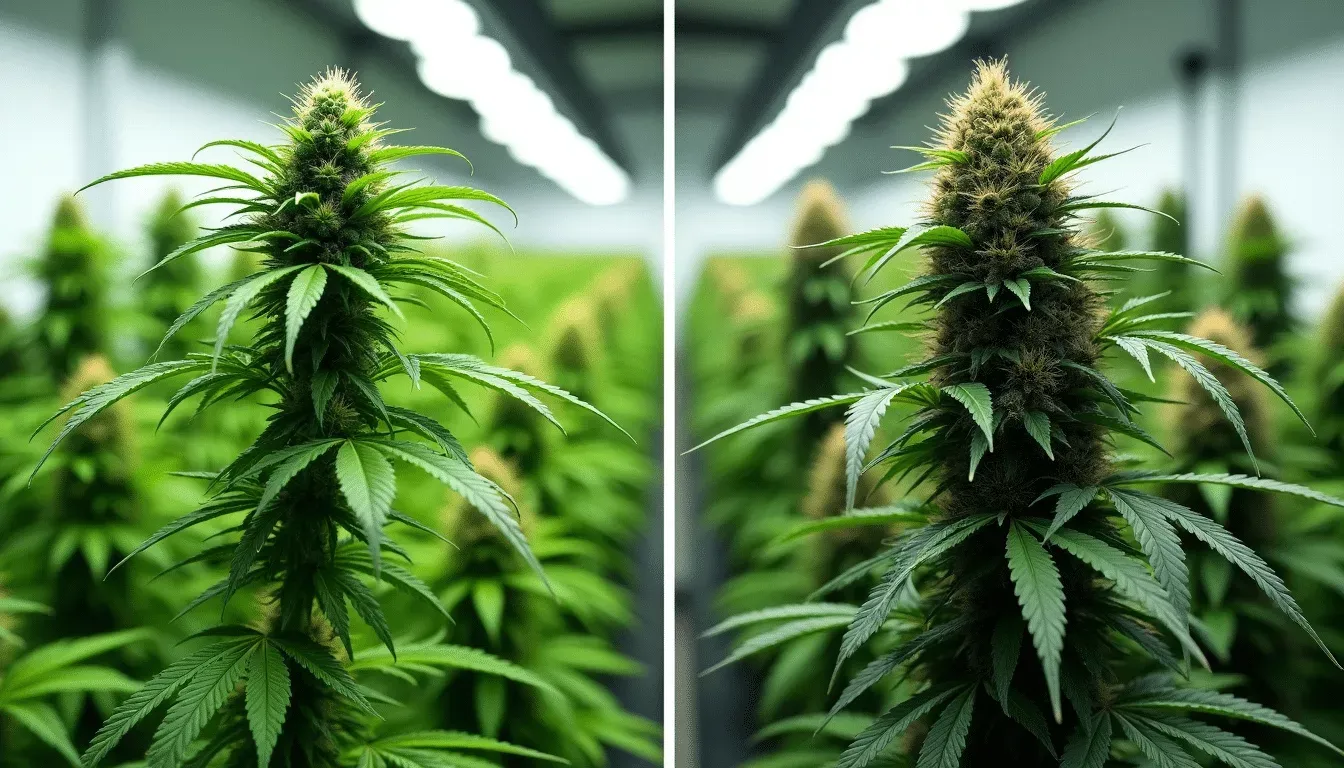how is marijuana different from hemp
Imagine a world where the terms marijuana and hemp are used interchangeably, creating a haze of confusion. In reality, this confusion is quite common, even though the distinction between these two plants is significant and important. Understanding these differences is crucial not only for consumers but also for businesses, policymakers, and health professionals. This article seeks to demystify the often-confused relationship between marijuana and hemp, shedding light on their distinct characteristics, uses, and benefits. By the end, you’ll gain a clearer understanding of why knowing the difference matters and how it can influence decisions in various aspects of life.
Exploring the Basics: What Sets Marijuana and Hemp Apart?
To untangle the confusion, let’s lay the groundwork by examining the basic differences between marijuana and hemp. Both plants belong to the Cannabis sativa species, which explains their similarities in appearance and chemical properties. However, the distinction lies primarily in their usage, cultivation, and chemical makeup.
Chemical Composition
The most notable difference between hemp and marijuana is their respective levels of tetrahydrocannabinol (THC) and cannabidiol (CBD), the two main chemical compounds found in cannabis plants. THC is the psychoactive component that gives marijuana its characteristic “high.” In contrast, CBD is non-psychoactive and has been celebrated for its therapeutic potential.
-
Marijuana: Characterized by its high THC content, marijuana typically contains anywhere from 5% to 30% THC. This level of THC makes it suitable for recreational and medicinal use where psychoactive effects are desired.
- Hemp: Legally defined as cannabis with less than 0.3% THC, hemp contains higher levels of CBD, making it an ideal candidate for those seeking medicinal benefits without the intoxicating effects of THC.
Cultivation and Appearance
While both plants share genetic roots, their cultivation practices differ significantly.
-
Marijuana: Grown primarily for its flowers, marijuana plants tend to be short and bushy with dense buds. The goal here is to maximize the production of THC-rich flowers.
- Hemp: Typically cultivated in large, dense fields similar to other crops like corn. Hemp plants are taller and sturdier, grown for fiber, seeds, and CBD-rich flowers. Their versatility makes them a valuable crop for various industrial applications.
The Benefits and Uses of Marijuana and Hemp
Now that we’ve established a foundational understanding of their differences, let’s explore the unique benefits and practical applications of each plant. Both have carved out their own niches in industries ranging from medicine to textiles, and even to construction.
Therapeutic and Medicinal Uses
-
Marijuana: With its significant THC content, marijuana is often used for both recreational and medicinal purposes. Medically, it’s been credited with alleviating chronic pain, mitigating the effects of chemotherapy, reducing symptoms of PTSD, and assisting patients with conditions like epilepsy and multiple sclerosis. In states where marijuana is legal, it’s increasingly being prescribed as a substitute for opioids and other potent medications.
- Hemp: Hemp-derived CBD products have surged in popularity due to their purported health benefits. Many users report relief from anxiety, inflammation, insomnia, and even some seizure disorders without the psychoactive effects. The World Health Organization (WHO) has acknowledged CBD as having a good safety profile and being well-tolerated in humans.
Industrial and Environmental Applications
- Hemp: Known as a “miracle crop,” hemp’s versatility is astounding. It can be processed into a vast range of products, from textiles and plastics to biofuel and building materials. The ecological benefits are just as impressive—hemp grows rapidly, requires fewer pesticides, and can improve soil health, making it an environmentally friendly alternative to many traditional crops.
Nutritional Value
Hemp seeds are a nutritional powerhouse, offering essential fatty acids like omega-3 and omega-6, proteins, and various minerals. They can be consumed raw, cooked, or pressed into oil, providing a sustainable and nutritious food source.
Practical Insights and Recommendations
Understanding the differences between marijuana and hemp can unlock numerous opportunities, whether you’re an avid consumer, a professional in the cannabis industry, or someone advocating for policy change.
Tips for Consumers
-
Educate Yourself: Stay informed about the legal status of both hemp and marijuana in your area as it can vary widely. Understanding the regulations can help you make informed decisions.
-
Choose Products Wisely: When selecting hemp-derived CBD products, look for reputable brands that provide third-party lab testing to ensure quality and safety.
- Consider Your Needs: Identify whether you’re seeking therapeutic benefits, recreational use, or industrial applications to choose the right product.
Insights for Entrepreneurs
-
Capitalize on the Hemp Revolution: With growing consumer awareness and demand for sustainable products, hemp offers limitless business opportunities across multiple industries.
- Policy Advocacy: Advocate for policies that support hemp farmers and entrepreneurs, emphasizing the crop’s environmental benefits and economic potential.
For Policymakers and Health Professionals
-
Promote Research: Support studies exploring the full potential of cannabis, especially its medical applications, to pave the way for informed legislation and healthcare options.
- Public Health Education: Focus on educating the public about the differences between marijuana and hemp, promoting safe consumption practices, and dispelling myths.
Conclusion: Embrace the Distinct Roles of Marijuana and Hemp
In wrapping up, recognizing the distinct roles that marijuana and hemp play is essential for anyone interested in the burgeoning cannabis landscape. While these plants originate from the same species, their applications, benefits, and societal roles couldn’t be more different. Whether you’re exploring medical options, industrial applications, or changes in legislation, understanding these differences empowers you to make enlightened decisions.
The next step? Dive deeper. If you’re intrigued, explore the vast array of peer-reviewed studies, government resources, and industry insights available. A recommended starting point is the National Institute of Health that offers a wealth of scientific research around cannabis. Share what you’ve learned with others, engage in thoughtful discussions, and continue to fuel your curiosity about these fascinating plants that have so much to offer.
By embracing this knowledge, we can collectively move towards a more informed, balanced perspective on marijuana and hemp, ultimately benefiting society as a whole.
FAQ: Differences Between Marijuana and Hemp
What is the main difference between marijuana and hemp?
The primary difference lies in their chemical composition. Marijuana contains higher levels of THC (tetrahydrocannabinol), the psychoactive compound that produces a “high,” while hemp has lower levels of THC and higher concentrations of CBD (cannabidiol), which is non-psychoactive.
Are marijuana and hemp the same species?
Yes, both marijuana and hemp belong to the same species, Cannabis sativa. However, they are cultivated and used for different purposes due to their distinct chemical profiles.
How does the legal status of marijuana and hemp differ?
The legal status varies by country and region. In many places, hemp is legal to cultivate and use, especially for industrial purposes, due to its low THC content. Marijuana, with higher THC levels, is often subject to stricter regulations and may be illegal or permitted only for medical and recreational use.
Can hemp be used to produce marijuana?
No, hemp cannot be used to produce marijuana. Although they are from the same species, hemp’s low THC concentration means it cannot produce the psychoactive effects associated with marijuana.
What are the uses of hemp and marijuana?
Hemp is commonly used in the production of textiles, building materials, biofuels, food products, and CBD oils due to its strong fibers and high CBD content. Marijuana is primarily used for recreational and medical purposes due to its psychoactive properties and therapeutic potential.
Related: hemp seed oil benefits
Share this content:



